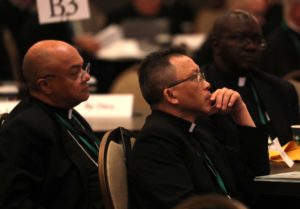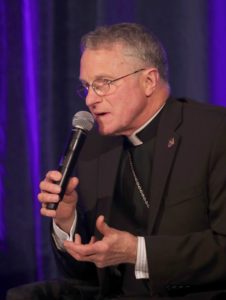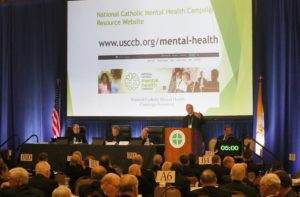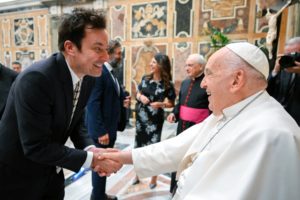 Holy Grand Duchess Tatiana Nikolaevna Romanova June 11 (May 29 according to the old calendar) this year was the 127th anniversary of the birth of the second daughter of Emperor Nicholas II and Empress Alexandra Feodorovna—Grand Duchess Tatiana Nikolaevna Romanova.
Holy Grand Duchess Tatiana Nikolaevna Romanova June 11 (May 29 according to the old calendar) this year was the 127th anniversary of the birth of the second daughter of Emperor Nicholas II and Empress Alexandra Feodorovna—Grand Duchess Tatiana Nikolaevna Romanova.
Grand Duchess Tatiana Nikolaevna was born on June 11 (May 29), 1897 and was the second child of the Romanov Imperial couple.
“1897, May 29. The second bright, happy day in our family life: at 10:40 a.m., the Lord blessed us with a daughter, Tatiana,” St. Nicholas II wrote in his diary.
The newborn was baptized by the Imperial Family’s father-confessor, Protopresbyter John Yanyshev, on June 8 of the same year at the church of the Grand Palace of Peterhof. During the sacrament, the Empress Dowager Maria Feodorovna, the newborn’s grandmother, awarded the Order of St. Catherine to the Grand Duchess.
Tatiana was one of the four daughters of 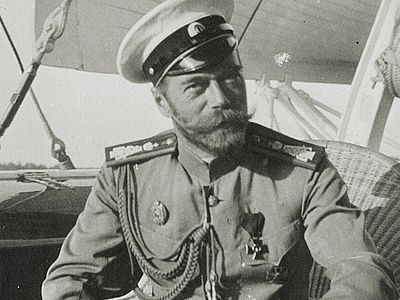 Emperor Nicholas II: Rare Photos from Family AlbumsWe here present rare photographs of the tsar from 1907 to 1915 from six family albums that were taken abroad by the empress’ lady-in-waiting Anna Vyrubova.
Emperor Nicholas II: Rare Photos from Family AlbumsWe here present rare photographs of the tsar from 1907 to 1915 from six family albums that were taken abroad by the empress’ lady-in-waiting Anna Vyrubova.
“>St. Nicholas II and Empress Alexandra Feodorovna.  Grand Princess Olga Nicholaevna RomanovaGrand Princess Olga Nicholaevna (1895-1918), the first child of Emperor Nicholai II and Empress Alexandra Feodorovna, was born on November 3, 1895. “>Grand Duchesses Olga (b. 1895) and Tatiana were informally called the “elder pair”, while the sisters Maria (b. 1899) and Anastasia (b. 1901) were nicknamed the “younger pair”.
Grand Princess Olga Nicholaevna RomanovaGrand Princess Olga Nicholaevna (1895-1918), the first child of Emperor Nicholai II and Empress Alexandra Feodorovna, was born on November 3, 1895. “>Grand Duchesses Olga (b. 1895) and Tatiana were informally called the “elder pair”, while the sisters Maria (b. 1899) and Anastasia (b. 1901) were nicknamed the “younger pair”.
 Grand Duchess Tatiana Nikolaevna with her mother Princess Tatiana looked like Empress Alexandra Feodorovna.
Grand Duchess Tatiana Nikolaevna with her mother Princess Tatiana looked like Empress Alexandra Feodorovna.
“Tatiana Nikolaevna took after her mother—she was tall and thin,” recalled A.A. Taneyeva (Vyrubova), a close friend of the Royal Family. “The Emperor told me that Tatiana Nikolaevna strongly reminded him of the Empress in her character and manners.”
The head of the Court Chancellery, Lieutenant General A.A. Mosolov, comparing her to her older sister Olga, wrote:
“Tatiana was taller, thinner and slimmer than her sister, her face was oblong, her entire figure was more elegant and aristocratic, and her hair was a little darker than that of the older one. In my opinion, Tatiana Nikolaevna was the most beautiful of the four sisters.”
 Grand Duchesses Olga and Tatiana Romanov “Tatiana Nikolaevna was twenty years old, she was dark blonde, thin, and elegant. She was her older sister’s opposite. She was withdrawn, reserved, focused and independent. Her sphere was housework, needlework, and everyday household life. Thanks to such traits of her character she, and not Olga Nikolaevna, was seen as the eldest daughter in the family. She resembled her mother more than all the other sisters and was her closest friend and adviser,” the investigator N.A. Sokolov wrote about Princess Tatiana Nikolaevna.
Grand Duchesses Olga and Tatiana Romanov “Tatiana Nikolaevna was twenty years old, she was dark blonde, thin, and elegant. She was her older sister’s opposite. She was withdrawn, reserved, focused and independent. Her sphere was housework, needlework, and everyday household life. Thanks to such traits of her character she, and not Olga Nikolaevna, was seen as the eldest daughter in the family. She resembled her mother more than all the other sisters and was her closest friend and adviser,” the investigator N.A. Sokolov wrote about Princess Tatiana Nikolaevna.
Courtiers noted Tatiana Nikolaevna’s deep nature—she was a person of integrity—along with her exceptional kindness and friendliness. Graceful and very feminine, she won people’s hearts with her beauty and intelligence. Shy by nature and outwardly restrained, she was reticent by character, because of which outsiders often accused her of being arrogant and proud, which was not true. The princess had amazing composure; she was notable for her organization and firmness of purpose. Tatiana developed a sense of duty and a penchant for order.
Princess Tatiana was a leader among the royal children and helped her parents raise them.
“She… would always stop the sisters and remind them of their mother’s will, for which they constantly called her, ‘governess’,” wrote A.A. Taneyeva.
Whenever the Empress was unwell or her brother Alexei was ill, Tatiana, like the other sisters, cared for them tenderly. According to her contemporaries, due to her mother’s illness, Tatiana often had to keep house and preserve order in it. She loved to embroider and knit; she sewed blouses for herself and her sisters and knew how to make beautiful coiffures. Everyone who came into close contact with the Royal Family testified that Tatiana was very practical and quick to cope with various life situations.
Let us give the floor to people who knew the Grand Duchesses intimately.
 Pierre Gilliard with his students, Grand Duchesses Olga and Tatiana in Livadia, 1911
Pierre Gilliard with his students, Grand Duchesses Olga and Tatiana in Livadia, 1911
 Those Who Remained FaithfulThe names of the faithful servants and close ones who voluntarily shared imprisonment and exile to Siberia with the Royal Family are inscribed forever on the pages of Russia’s glory.
Those Who Remained FaithfulThe names of the faithful servants and close ones who voluntarily shared imprisonment and exile to Siberia with the Royal Family are inscribed forever on the pages of Russia’s glory.
“>Pierre Gilliard, who taught French to the Tsar’s children, wrote:
“Tatiana Nikolaevna was rather restrained by nature; she had a strong will, but was less open and spontaneous than her older sister. She was less naturally intelligent than Olga, but this disadvantage was made up for by her great consistency and even temper. She was very beautiful, although she lacked the charm of Olga Nikolaevna… With her beauty and natural ability to conduct herself in high society perfectly, she overshadowed her sister who was less concerned with her own person and was less conspicuous. Nevertheless, these two sisters loved each other dearly; there was only a year and a half age difference, which naturally brought them closer.”
Empress Maria Feodorovna’s lady-in-waiting S.Ya. Ofrosimova recalled scenes of the past in emigration:
“Grand Duchess Tatiana Nikolaevna is sitting to my right. She is a Grand Duchess from head to toe; how aristocratic and royal she is! Her face is lusterless and pale, only her cheeks show a little pink, as if pink satin were breaking through from under her thin skin. Her profile is immaculately beautiful, as if sculpted from marble by a great artist’s chisel. Her eyes are far apart, which makes her face original and distinctive… She laughs less often than her sisters. Sometimes her face has a concentrated and stern expression. She looks like her mother at these moments. There are traces of intense thought and sometimes even sadness on the pale features of her face. I feel without words that there is a whole closed and original world inside her.”
 S. K. Buxhoeveden, Olga and Tatiana Nikolaevna, 1914
S. K. Buxhoeveden, Olga and Tatiana Nikolaevna, 1914
Baroness S.K. Buxhoeveden wrote of Tatiana Nikolaevna:
“She had beautiful, regular features… She possessed a mixture of sincerity, straightforwardness and perseverance, along with a penchant for poetry and abstract ideas… she had a practical mind inherited from her mother the Empress and a detailed approach to everything.”
 A. A. Vyrubova, Alexandra Fedorovna and Yu. A. Dehn
A. A. Vyrubova, Alexandra Fedorovna and Yu. A. Dehn
Yulia von Dehn, the Tsarina’s friend, recalled:
“Grand Duchess Tatiana Nikolaevna was as charming as her older sister, but in her own way… She had a poetic nature and longed for true friendship… She was fresh, fragile and as pure as a rose.”
“She was a young lady of a well-developed character and an open, honest and pure nature… She helped in her mother’s illness, doing the chores and taking care of Alexei Nikolaevich. She was smart, cultivated, and loved to keep house,” this is how Colonel E.S. Kobylinsky, the Commander of the Special Detachment at Tsarskoye Selo, described her.
A.A. Taneyeva recalled:
“Everyone loved her—the household, the tutors, and those in military hospitals.”
All memoirists agree that of the four sisters Tatiana was the closest to her mother: she always tried to lavish care and attention on her and hear her out. Their English teacher Charles Gibbes (later Archimandrite Nicholas) testified, “In my opinion, the Empress loved Tatiana more than her other daughters.” This opinion was shared by the tutor Claudia Bitner: “She was the closest person to the Empress. They were two friends.”
Tatiana had an excellent home education. She knew foreign languages, read a lot, including spiritual literature, played the piano perfectly, and drew fairly well. She attended theaters and concerts with her parents. Tatiana was the commander of the Ulan Cavalry Regiment, and therefore considered herself to be an Ulan and was very proud of it. Together with the Emperor she took part in military parades, sitting in the saddle graciously.
 Alexander I Karađorđević In 1914, when Grand Duchess Tatiana turned seventeen, the family began to speak about her possible marriage. Among the suitors was the Serbian King Peter I’s son, Alexander. In order to meet the princess he and his father arrived in St. Petersburg, and they almost agreed on their future marriage, but the First World War broke out and prevented the wedding. Despite this, Tatiana and Alexander continued to correspond.
Alexander I Karađorđević In 1914, when Grand Duchess Tatiana turned seventeen, the family began to speak about her possible marriage. Among the suitors was the Serbian King Peter I’s son, Alexander. In order to meet the princess he and his father arrived in St. Petersburg, and they almost agreed on their future marriage, but the First World War broke out and prevented the wedding. Despite this, Tatiana and Alexander continued to correspond.
During the First World War, Tatiana, along with her mother and sister Olga, labored as a nurse at the Tsarskoye Selo Hospital, where she bandaged purulent wounds and assisted in operations. T.E. Melnik-Botkina, the daughter of the physician Eugene Botkin, who treated the Tsarina and Tsarevich Alexei, recalled:
“‘I marvel at their capacity for work,’ my father used to tell me about the Royal Family. ‘Grand Duchess Tatiana Nikolaevna, for example, before going to the military hospital gets up at seven in the morning to take a lesson, then they both go to do bandaging, then breakfast, lessons again, visiting all the sick, and once evening comes, they immediately set about doing needlework or reading.’”
 Tatiana Eugenievna Botkina
Tatiana Eugenievna Botkina
She also recalled:
“Doctor Derevenko, who had very high expectations for his nurses, told me after the Revolution that he had rarely met such a calm, adroit and able surgical nurse as Tatiana Nikolaevna.”
 Head of the Chancellery of the Imperial Court, Lieutenant General Alexander Alexandrovich Mosolov A.A. Mosolov wrote about Grand Duchesses Olga and Tatiana:
Head of the Chancellery of the Imperial Court, Lieutenant General Alexander Alexandrovich Mosolov A.A. Mosolov wrote about Grand Duchesses Olga and Tatiana:
“Not only did they perform the duties of ordinary nurses in the full sense of the word, but they also assisted with great skill in complex operations… Tatiana was the most serious and self-restrained of all.”
She went to the military hospital every day, even on her name day.
A few weeks after the outbreak of the First World War, the Grand Duchess established the Committee of Her Imperial Highness Grand Duchess Tatiana Nikolaevna for the Temporary Relief of Victims of War. The Committee provided aid to civilians affected by the war, facilitated the sending of refugees to their homeland, helped those capable of working find employment, had invalids admitted to almshouses and asylums, and paid benefits to refugees from collected donations.
 Holy Grand Duchess Tatiana Nikolaevna Romanova On behalf of Princess Tatiana, her appeal was published in newspapers:
Holy Grand Duchess Tatiana Nikolaevna Romanova On behalf of Princess Tatiana, her appeal was published in newspapers:
“The war has devastated and scattered millions of our civilians: unfortunate refugees, homeless and starving, are looking for food. The Government, public and national institutions, private benefactors and my Committee are helping refugees, but their need is so great that only the whole nation can cover it.
“Please, generous people, warm refugees spiritually and physically and comfort them with the awareness that you understand their hopeless grief. Keep in mind the testament of the Lord: For I was an hungred, and ye gave Me meat: I was thirsty, and ye gave Me drink: I was a stranger, and ye took Me in (Mt. 25:35). November 9, 1915, Tsarskoye Selo. TATIANA.”
The princess took to heart the tragedy into which the First World War had plunged Russia. Here is Tatiana’s letter dated August 15, 1915, addressed to her parents:
“I am praying all the time for both of you, my dears, that God will help you in this terrible time. I just can’t express how sorry I feel for you, my beloved. It’s such a pity that I can’t help you… I bless you, my beloved parents. I kiss You and dear Dad many times… Your loving and faithful daughter Tatiana.”
Indeed Tatiana was a loving and obedient daughter, as evidenced by her letters. Here is another letter written on Christmas Day, 1916:
“My precious, dear Mama, I am praying that God will help you now in this terrible, difficult time. May He bless and protect you from all evil, my dearest angel and Mother…”
The officer Semyon Pavlov, who was treated at the Tsarskoye Selo Hospital, made interesting observations:
“If Grand Duchess Olga was the embodiment of femininity and special endearment, Grand Duchess Tatiana was undoubtedly the embodiment of courageousness, energy and strength… Grand Duchess Tatiana evoked a feeling of a deep respect…”
 Dmitry Yakovlevich Malama in the uniform of the graduating class of the Page Corps of His Imperial Majesty, 1912 Dmitry Yakovlevich Malama, a cornet of the Life Guards of the Cavalry Regiment of Lancers, who underwent treatment at the Tsarskoye Selo Hospital, was in love with Princess Tatiana. It seems that Tatiana also liked him. The Empress had a benevolent attitude towards the young man as well—she wrote to her husband:
Dmitry Yakovlevich Malama in the uniform of the graduating class of the Page Corps of His Imperial Majesty, 1912 Dmitry Yakovlevich Malama, a cornet of the Life Guards of the Cavalry Regiment of Lancers, who underwent treatment at the Tsarskoye Selo Hospital, was in love with Princess Tatiana. It seems that Tatiana also liked him. The Empress had a benevolent attitude towards the young man as well—she wrote to her husband:
“My little Malama spent an hour with me last night, after dinner at Anya’s… I must admit that he could make an excellent son–in-law. Why aren’t foreign princes like him?”
According to his relatives, on learning about the execution of the Royal Family, Dmitry Malama began to seek death deliberately and was killed in the summer of 1919 in a cavalry attack near Tsaritsyn.
After the February Revolution Tatiana and her family were arrested in Tsarskoye Selo. The Tsar and his daughters had to lay out a vegetable garden in the park and grow vegetables to survive. They sawed up dead trees in the woods for the stove. St. Nicholas II wrote in his diary on his daughter’s birthday:
“Dear Tatiana has turned twenty. I went for a long walk with all the children in the morning. At noon there was a prayer service. In the afternoon we spent three hours in the garden, two of which I spent working in the woods.”
There was no grand reception at the palace that day on the occasion of Grand Duchess Tatiana’s birthday.
 St. Nicholas II’s eldest daughter, Grand Duchess Olga, sits a little apart, followed by Emperor Nicholas II, Tsarevich Alexei, Grand Duchesses Tatiana, Maria and Anastasia. Tobolsk
St. Nicholas II’s eldest daughter, Grand Duchess Olga, sits a little apart, followed by Emperor Nicholas II, Tsarevich Alexei, Grand Duchesses Tatiana, Maria and Anastasia. Tobolsk
On August 1, 1917, the family of the former Emperor Nicholas II was exiled to Tobolsk. Here is an excerpt from Tatiana’s letter from Tobolsk to her maid of honor Margarita Khitrovo:
“Everything that is being done to our poor Motherland is so painful and sad, but there is one hope that God will not forsake us and will bring the madmen to reason.”
On April 22, 1918, by order from Moscow it was decided to transfer the royal prisoners from Tobolsk to Ekaterinburg. However, due to the Tsarevich’s serious illness the whole family could not go to Ekaterinburg. The Emperor, the Tsarina and Princess Maria went, while the sick Alexei was left in the care of his sisters. Tatiana ran the household. Colonel E.S. Kobylinsky recalled:
“After the departure of the Emperor and the Empress from Tobolsk, hardly anyone noticed Olga Nikolaevna’s seniority. Whenever something was needed, everybody always turned to Tatiana: ‘As Tatiana Nikolaevna says…’”
When Tsarevich Alexei got a little better, the princesses, their tutors and servants went to Ekaterinburg under guard. On the arrival of the train in Ekaterinburg, the royal children, the sailor Klimenty Nagorny (the personal assistant of the Tsarevich) and several servants were taken to the carriages waiting for them. The Englishman Charles Sidney Gibbes (later Archimandrite Nicholas) wrote in his reminiscences that through a carriage window he had seen Tatiana Nikolaevna, sinking ankle-deep in mud, carrying a heavy suitcase in one hand and the Tsarevich’s beloved dog in the other. Nagorny wanted to help her, but the guard roughly pushed him away.
 In the Ipatiev House on the site of the Royal Family’s execution
In the Ipatiev House on the site of the Royal Family’s execution
During the persecution, the Royal Family was especially united, carrying their indestructible faith through all the hardships and suffering. On the last day of their lives Alexandra Feodorovna made the following entry in her diary:
“Everyone went for a walk for half an hour in the morning… When they left, Tatiana stayed with me, and we read the books of the Prophets Obadiah and Amos together…”
In difficult moments of severe ordeal Grand Duchess Tatiana did not lose heart. The last entry in her diary, made in Ekaterinburg, was a quotation from St. John of Kronstadt:
“Your sorrow is indescribable, the Savior’s sorrow in the Garden of Gethsemane for the sins of the world is immeasurable; unite your sorrow with His and in this you will find solace.”
Nicholas II, Alexandra Feodorovna, their children, Dr. Botkin and their three servants were shot. Tatiana did not die immediately; the bullets were hampered by diamonds sewn into her corsets. She was finished off with bayonets.
On August 20, 2000, Grand Duchess Tatiana, along with Emperor Nicholas II and Empress Alexandra Feodorovna, her sisters Olga, Maria, Anastasia and brother Tsarevich Alexei were canonized as New Martyrs of Russia at the Jubilee Bishops’ Council of the Russian Orthodox Church. Earlier, in 1981, they were canonized by ROCOR.
Holy Royal Martyrs, pray to God for us!
 A fragment of the painting on the vault of the Resurrection Cathedral of the Moscow Sretensky Monastery. The Royal Martyrs are in the center. Photo: Chebotar Alexander Mircevic / temples.ru
A fragment of the painting on the vault of the Resurrection Cathedral of the Moscow Sretensky Monastery. The Royal Martyrs are in the center. Photo: Chebotar Alexander Mircevic / temples.ru

 Emperor Nicholas II: Rare Photos from Family AlbumsWe here present rare photographs of the tsar from 1907 to 1915 from six family albums that were taken abroad by the empress’ lady-in-waiting Anna Vyrubova.
Emperor Nicholas II: Rare Photos from Family AlbumsWe here present rare photographs of the tsar from 1907 to 1915 from six family albums that were taken abroad by the empress’ lady-in-waiting Anna Vyrubova. Grand Princess Olga Nicholaevna RomanovaGrand Princess Olga Nicholaevna (1895-1918), the first child of Emperor Nicholai II and Empress Alexandra Feodorovna, was born on November 3, 1895. “>Grand Duchesses Olga (b. 1895) and Tatiana were informally called the “elder pair”, while the sisters Maria (b. 1899) and Anastasia (b. 1901) were nicknamed the “younger pair”.
Grand Princess Olga Nicholaevna RomanovaGrand Princess Olga Nicholaevna (1895-1918), the first child of Emperor Nicholai II and Empress Alexandra Feodorovna, was born on November 3, 1895. “>Grand Duchesses Olga (b. 1895) and Tatiana were informally called the “elder pair”, while the sisters Maria (b. 1899) and Anastasia (b. 1901) were nicknamed the “younger pair”. 


 Those Who Remained FaithfulThe names of the faithful servants and close ones who voluntarily shared imprisonment and exile to Siberia with the Royal Family are inscribed forever on the pages of Russia’s glory.
Those Who Remained FaithfulThe names of the faithful servants and close ones who voluntarily shared imprisonment and exile to Siberia with the Royal Family are inscribed forever on the pages of Russia’s glory.












